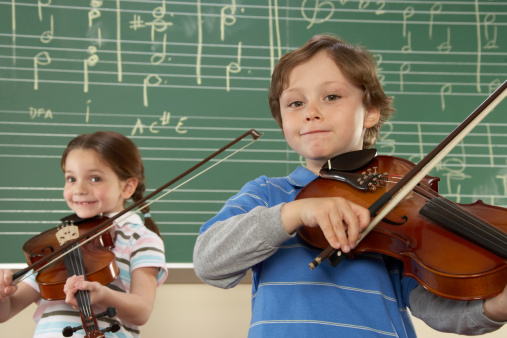Teaching Gifted Students in Full-Inclusion Classrooms

In the world of education, a gifted and talented child is defined as someone who has exceptional aptitude or talent in one or more areas. While some gifted children are separated from their peers and educated in special gifted and talented classrooms, others are served by getting involved in special enrichment classes and activities, either during or after school.
Recognizing a student’s giftedness by pulling a student out of the general education classroom can often have negative side effects. Keeping gifted students in the classroom through a full-inclusion program, however, can negate some of those side effects. In a full-inclusion classroom, gifted students stay in the classroom with students of all abilities and the classroom instruction is differentiated, allowing gifting students to receive instruction at their level while still interacting with their peers.
Celebrating Areas of Giftedness
One of the benefits of teaching gifted children in a full-inclusion classroom is the ability to focus on their specific areas of giftedness. While some students are gifted in multiple areas, many students may only be gifted in one or two key areas. Unfortunately, when students are identified as gifted, they are often treated as if they are gifted in every area and therefore receive high-level instruction in every area, even if they are not ready for it. In a full-inclusion classroom, instruction in every subject is differentiated, allowing gifted students to work at higher-levels in areas where they are gifted and work at other levels in areas where they are not.
Positive Interaction with Peers
Being gifted is not easy. Often when gifted children are pulled out of the general education classroom they face ridicule from their peers. While teaching gifted children in full-inclusion classrooms does not guarantee they will never be called a “nerd” or made fun of for their giftedness, it does not make their giftedness as obvious to their peers. They have the opportunity to socialize with other students their age and learn to work and interact with students of all different ability levels. In the full-inclusion classroom, every child has his/her own strengths and weaknesses.
Enhancing the Curriculum
When done effectively, full-inclusion programs have the potential to enhance the curriculum for all students, not just gifted students. Special classes and pull-out programs for gifted students typically follow a set curriculum and just work at a higher level than general education classrooms, but they do not always meet the needs of gifted students. Full-inclusion classrooms operate with differentiated instruction, allowing teachers to focus on adapting the curriculum to meet the needs of individual gifted children and all students in the classroom, thereby enhancing the curriculum and improving the instruction all students receive.
Full Inclusion Done Right
For teachers, a full-inclusion classroom full of students with learning disabilities, gifted students and those who are just average can be overwhelming. In order for full-inclusion classes to become overwhelming for gifted students, teachers must be committed to teaching gifted children and all children at their levels through differentiated instruction.
But is being committed enough? When done correctly, gifted students can reap the benefits of being instructed in a full-inclusion classroom, but can it be done correctly in the classrooms of today? Leave your own thoughts in the comments below.


